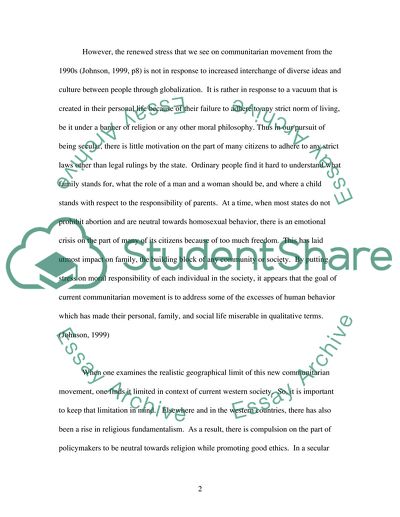Cite this document
(“The Spirit of Community Case Study Example | Topics and Well Written Essays - 2500 words”, n.d.)
The Spirit of Community Case Study Example | Topics and Well Written Essays - 2500 words. Retrieved from https://studentshare.org/sociology/1728896-can-communtarism-adequately-recognise-support-and-promote-moral-and-cultural-diversity-illustrate-your-answer-with-particular-reference-to-nationality-and-family
The Spirit of Community Case Study Example | Topics and Well Written Essays - 2500 words. Retrieved from https://studentshare.org/sociology/1728896-can-communtarism-adequately-recognise-support-and-promote-moral-and-cultural-diversity-illustrate-your-answer-with-particular-reference-to-nationality-and-family
(The Spirit of Community Case Study Example | Topics and Well Written Essays - 2500 Words)
The Spirit of Community Case Study Example | Topics and Well Written Essays - 2500 Words. https://studentshare.org/sociology/1728896-can-communtarism-adequately-recognise-support-and-promote-moral-and-cultural-diversity-illustrate-your-answer-with-particular-reference-to-nationality-and-family.
The Spirit of Community Case Study Example | Topics and Well Written Essays - 2500 Words. https://studentshare.org/sociology/1728896-can-communtarism-adequately-recognise-support-and-promote-moral-and-cultural-diversity-illustrate-your-answer-with-particular-reference-to-nationality-and-family.
“The Spirit of Community Case Study Example | Topics and Well Written Essays - 2500 Words”, n.d. https://studentshare.org/sociology/1728896-can-communtarism-adequately-recognise-support-and-promote-moral-and-cultural-diversity-illustrate-your-answer-with-particular-reference-to-nationality-and-family.


